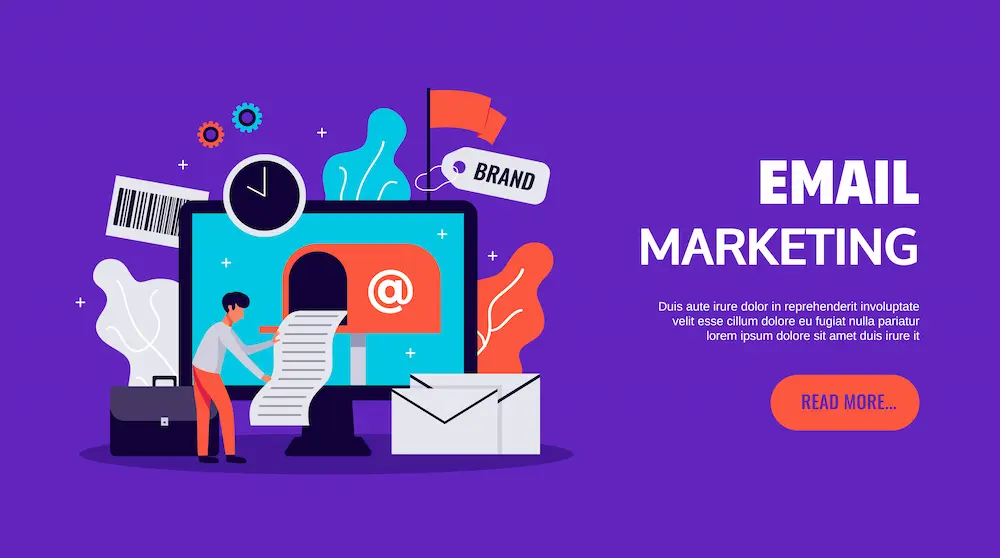How to Stay Ahead in Search Rankings with Google SGE

Introduction
Search engine optimization (SEO) has always been a constantly evolving beast. From the early days of keyword spamming and backlink stuffing to present times’ advanced algorithms, the game is constantly evolving. And now, with Google’s Search Generative Experience (SGE), the world is undergoing one of its biggest overhauls in history.
SGE brings AI-powered solutions directly into search results, presenting users with fast summaries, clues about context, and useful resources without having to navigate multiple websites. For the user, it’s a giant step to convenience. For business owners, marketers, and content producers, however, the question is:
How to keep the lead in search rankings using Google SGE?
This guide will guide you step-by-step through what SGE is, why it’s here, how it’s revolutionizing SEO, and most importantly, the ways in which you can still be visible, trusted, and competitive within this new AI-fueled era of search.
What is Google SGE?
Google’s Search Generative Experience is designed to make search more conversational and contextual. Instead of showing you a simple list of links, it uses generative AI to create concise, content-dense summaries at the top of the page.
Suppose you want “best productivity tools for freelancers.” In pre-SGE times, you would find a list of articles and click several times to get what you need. With SGE, Google automatically creates a nicely packaged summary, with top tools, why they are helpful, and links to expert sources — in one.
That equates to the users receiving what they want sooner. But it also means that how companies and websites go about SEO must change.

Why SGE Matters for SEO
SGE is not a small tweak to how results are returned, but a seismic shift in how people interact with content on the web. Here’s why it matters:
1. Less Clicking, More Summarizing
Because SGE gives users many answers directly in the results, they may not have to click through as often. That could lead to less traffic for sites that rely on traditional rankings.
2. Greater Authority for Head Sources
Conversely, sources that get cited in SGE abstracts receive a massive lift in visibility. Getting mentioned in AI responses establishes your brand as authoritative and trusted, and those references can continue to drive traffic.
3. Greater Focus on Context and Depth
SGE is not pulling from shallow, surface-level content. It’s looking for deep, precise, and contextually relevant content that truly answers user questions. Shallow, dated content will have little hope of being seen.
4. Move Toward Conversational Searches
As people get used to SGE, they will ask longer, more conversational searches, similar to how they would speak with a human being. To optimize those searches, one must think about more than short, exact-match keywords.
In short, if you need to stay competitive, you will have to re-strategize your SEO strategies for this new environment instead of employing the previous techniques.
Proven Strategies: How to Stay Ahead in Search Rankings with Google SGE
Now let’s dive into the actionable strategies that will bring you success.
1. Build Topical Authority
Google SGE prefers expert voices and authoritative domains. The more depth and breadth you have within your niche, the more Google sees you as an authority.
How to build topical authority:
- Publish comprehensive guides that exhaustively cover a topic.
- Add supporting material (blogs, case studies, FAQs) to cover subtopics.
- Implement internal linking to join related pieces.
- Refresh aged posts on a regular basis to make them current.
Example: If your website is on digital marketing, don’t merely stop at “SEO fundamentals.” Include detailed guides on “AI in SEO,” “content marketing trends,” and “local SEO strategies.” Gradually, this establishes your authority as the one-stop shop for everything digital marketing.
2. Create SGE-Friendly Content
SGE adores clarity and structure. AI is not a fan of fluff; it likes straightforward answers that it can summarize with ease.
How to AI-optimize your content:
- Begin with concise summaries for articles.
- Utilize bullet points, lists, and short paragraphs for scannability.
- Incorporate FAQs that contain answers to direct, conversational queries.
- Avoid using too complex terms — keep it simple and clear.
The more digestible your content is, the more SGE will feature it.
3. Highlight E-E-A-T (Experience, Expertise, Authoritativeness, Trustworthiness)
Google has doubled down on E-E-A-T. It’s seeking content that’s trustworthy, credible, and written by true experts.
To boost your E-E-A-T:
- Add author bios that mention credentials, experience, or daily expertise.
- Cite trusted external sources and link to them appropriately.
- Add case studies or personal anecdotes to demonstrate real-world experience.
- Build brand authority through guest articles, collaborations, and media citations.
In SGE, trust is everything. If your content seems unverified or generic, it will not cut it.
4. Optimize for Conversational and Long-Tail Keywords
Individuals no longer search “SEO tips” straightforwardly. With SGE, they type or say questions like:
- “How to stay ahead in search rankings with Google SGE”
- “Best SEO techniques for AI-powered Google search”
- “How does Google SGE affect small business websites?”
These long-tail, conversational keywords are how people really ask questions — and how SGE understands them.
Use tools such as Google’s People Also Ask, AnswerThePublic, or even ChatGPT to generate question-based searches in your niche.
5. Leverage Structured Data (Schema Markup)
SGE relies on structured data to understand your content. Schema markup gives Google the context it needs to categorize and rank your site.
Types of schema to implement:
- Article schema → for blogs and news articles.
- FAQ schema → for Q&A format pages.
- HowTo schema → for step-by-step guide content.
Think of schema as a translator that makes your content perfectly clear to Google’s AI.
6. Invest in High-Quality Visual Content
Search is no longer just text. SGE integrates images, videos, and charts right into results. If you want visibility, you can’t rely on text alone.
What to do:
- Create original graphics instead of relying solely on stock images.
- Use infographics to explain data or workflows.
- Create short, SEO-optimized videos (YouTube is heavily prioritized by Google).
Visual content makes your pages richer and offers additional opportunities for being cited in AI-created summaries.
7. Speed, UX, and Mobile-First Optimization
Technical SEO remains important even in the SGE era. Google won’t highlight sites that are slow, buggy, or hard to navigate.
Prioritize:
- Core Web Vitals → Optimize loading speed, interactivity, and visual stability.
- Mobile optimization → Over 60% of searches are mobile-first.
- Clean design → Reduce clutter and make navigation intuitive.
A fast, clean site signals quality and increases your chances of being referenced by SGE.
8. Encourage Engagement and Social Signals
While Google insists social media is not a direct ranking factor, it does affect visibility. The more your content gets shared widely, the more it’s likely to be trusted and referenced.
How to encourage engagement:
- Share your posts on LinkedIn, X (Twitter), and specialized groups.
- Request comments and conversation in your posts.
- Build an email list or web community around your brand.
Trusted audiences create a ripple effect — the more people trust your content, the more authoritative you appear to Google.
9. Optimize for Featured Snippets and “People Also Ask”
Featured snippets are SEO gold. They are often the source of SGE answers.
To steal snippets:
- Organize Q&A-style content with H2 and H3 headings.
- Provide short, direct answers followed by additional information.
- Make lists, tables, and steps readable.
If you’re ranking for snippets, you’re halfway to being cited in SGE results.
10. Keep Monitoring and Adjusting
SGE is still evolving, so SEO strategies need to be fluid.
Steps to stay ahead:
- Keep an eye on which of your pages are being featured in SGE summaries.
- Keep an eye on traffic and keyword shifts with tools like Google Search Console, Ahrefs, or Semrush.
- Keep an eye on competitors and learn from what they’re doing.
- Keep up with Google updates and SEO news.
SEO isn’t “set it and forget it.” It’s an ongoing process — especially with AI-powered search changing so quickly.

Future of SEO in SGE Era
Search engine optimization has never been a destination, but with Google’s Search Generative Experience (SGE), the pace of change is accelerating like never before. Traditional SEO methods previously focused on keyword targeting, backlinks, and on-page optimization. But today’s SGE is leading the industry into a direction that is more heroic: user-centered, AI-fueled search experience.
So, what now for SEO in this new environment and how do you move ahead on search rankings using Google SGE? Let’s look at the biggest changes you can expect and how to ready your business to thrive.
1. More Competition for Fewer Clicks
Perhaps the most remarkable consequence of SGE is that individuals will find their solutions literally within Google’s AI-digests. That results in fewer website clicks merely to gain simple information.
This sounds discouraging at first. But really, it’s a golden opportunity for authority-building businesses. If your content is being cited in these summaries, you’ll be more visible and credible — even though the traffic is less, the traffic you do get is far more qualified and valuable.
Think about it like this: instead of going after volume traffic just for the sake of it, the future of SEO will be getting quality traffic that converts. And that happens when you become one of the trusted sources Google includes in its SGE results.
Action step: Invest in producing original insights, research, and expert-level content that others can’t easily replicate. That increases your chances of being included in AI summaries.
2. The Emergence of Multimedia SEO
SGE does not confine itself to text responses. It more and more incorporates images, videos, charts, and infographics to give richer and more engaging responses. That implies that enterprises can no longer use blog entries alone to remain accessible.
- Short videos: Quick, straightforward videos presenting an idea or detailing a process are ideal for SGE integration. YouTube videos particularly are highly preferred because it’s a Google-owned application offering an excellent method for creating SEO-friendly content.
- Imagery: Infographics, specifically crafted graphics, and diagrams breaking down complex concepts into simple language make your content more “AI-friendly.”
- Audio and podcasting: With voice assistants becoming more popular, audio content optimized for spoken search queries will also become a core element.
Action step: Include at least one original graphic per article, and embed videos where possible. If all your competition has is text, multimedia provides you with an instant competitive edge.
3. More Emphasis on Credibility and Trust
All that content out there in the internet, Google AI must decide on whose voices to trust. That is where E-E-A-T (Experience, Expertise, Authoritativeness, Trustworthiness) comes in.
In SGE times, being who you are matters just as much as what you write. Content from credentialed authors, businesses with a history, and pages that have visible authors is far more likely to be cited.
Action steps toward building credibility:
- Provide extended author profiles based on credentials and experience.
- Cite relevant external sources and link to high-impact studies.
- Encourage positive reviews, testimonials, and case studies to establish credibility for your brand.
The more credibility signals you provide, the more comfortable Google will be to present your content in its AI summaries.
4. Integration with AI Assistants and Voice Search
SGE is just the tip of the iceberg — but think about where it’s headed. Search powered by AI isn’t limited to the Google search box; it’ll be implemented within voice assistants, smart home systems, and AI-powered chatbots in a heartbeat.
That means people not only will type in queries — they’ll be asking natural-language queries verbally. And the answers they’ll get will often come from the same SGE-powered system.
Action step: Optimize your content for conversational queries and long-tail keywords. Instead of focusing on a broad keyword like “SEO tips,” target natural questions such as:
- “How to stay ahead in search rankings with Google SGE?”
- “What SEO strategies still work in the age of AI search?”
By aligning with how people speak rather than just how they type, you’ll be positioned for both current SGE queries and future voice-driven searches.
5. Early Adopters Win Big
Every seismic shift in SEO has winners and losers. With mobile-first indexing, firms that transitioned early got ahead of the pack. With Core Web Vitals as a ranking signal, sites that invested in page speed saw massive payoffs.
The same will happen with Google SGE. Firms who understand it and transition early won’t just maintain rankings — they’ll steal market share from less responsive players.
Action step: Don’t wait for SGE to become the only way people search. Start adjusting your content and SEO practices now. This gives you a compounded edge that will be almost impossible for late arrivals to break.
Conclusion: Emerging as a success in the Age of Google SG
The arrival of SGE is the new chapter of search advertising. Yes, rules change, but don’t think SEO is dead. It simply indicates SEO is evolving — and businesses that learn will thrive.
Here’s a summary of the major points to stay ahead in search rankings using Google SGE:
- Establish topical authority: Talk about your niche comprehensively and frequently.
- Create SGE-friendly content: Write for clarity, summaries, and conversational questions.
- Say E-E-A-T to it: Authenticate your authority and credibility with credentials from the real world.
- Use multimedia: Leverage videos, images, and infographics to engage your content.
- Get conversational query ready: Target long-tail, natural-language search phrases.
- Be flexible: Monitor what works, keep an eye on your metrics, and change things if needed.
The bottom line? SEO is never going to be the same. But panic? No. It’s a reason to innovate. Take the right steps now, and you won’t only survive this change, you’ll come out stronger, more visible, and more authoritative online.
Ultimately, SGE does not render SEO unnecessary. It reinforces the merit of what SEO has always been: helping users find the most useful, authoritative, and relevant information on offer.
Firms that stay focused on this — and adjust their strategies accordingly — will always be ahead of the game.













